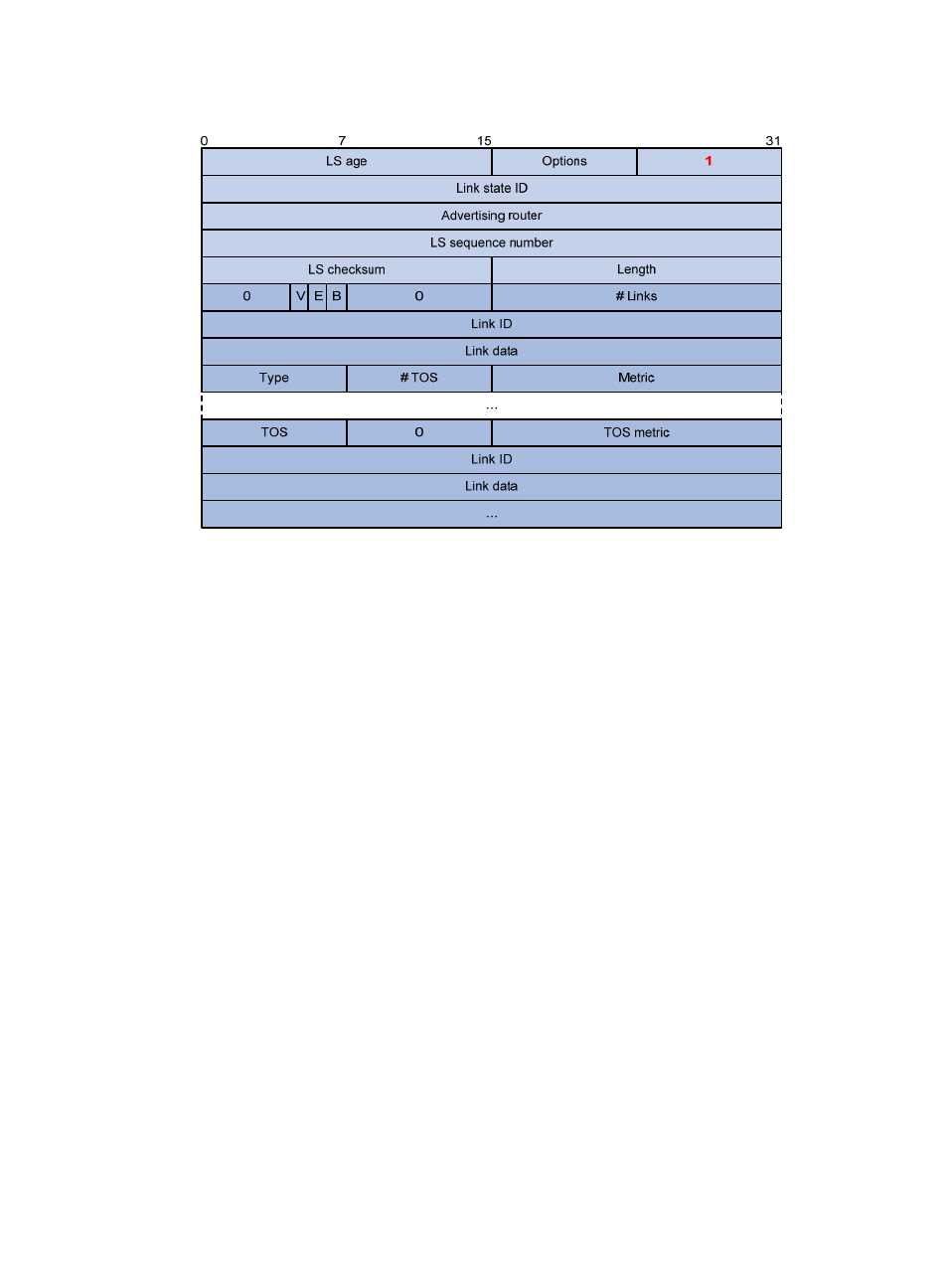H3C Technologies H3C S12500 Series Switches User Manual
Page 84

68
Figure 32 Router LSA format
Major fields of the Router LSA are as follows:
{
Link state ID—ID of the router originating the LSA.
{
V (Virtual Link)—Set to 1 if the router originating the LSA is a virtual link endpoint.
{
E (External)—Set to 1 if the router originating the LSA is an ASBR.
{
B (Border)—Set to 1 if the router originating the LSA is an ABR.
{
# Links—Number of router links (interfaces) to the area, as described in the LSA.
{
Link ID—Determined by link type.
{
Link data—Determined by link type.
{
Type—Link type. A value of 1 indicates a point-to-point link to a remote router; a value of 2
indicates a link to a transit network; a value of 3 indicates a link to a stub network; and a value
of 4 indicates a virtual link.
{
#TOS—Number of different TOS metrics given for this link. If no TOS metric is given for the link,
this field is set to 0. TOS is not supported in RFC 2328. The #TOS field is reserved for early
versions of OSPF.
{
Metric—Cost of using this router link.
{
TOS—IP Type of Service that this metric refers to.
{
TOS metric—TOS-specific metric information.
•
Network LSA
A Network LSA is originated by the DR on a broadcast or NBMA network. The LSA describes all
routers attached to the network.